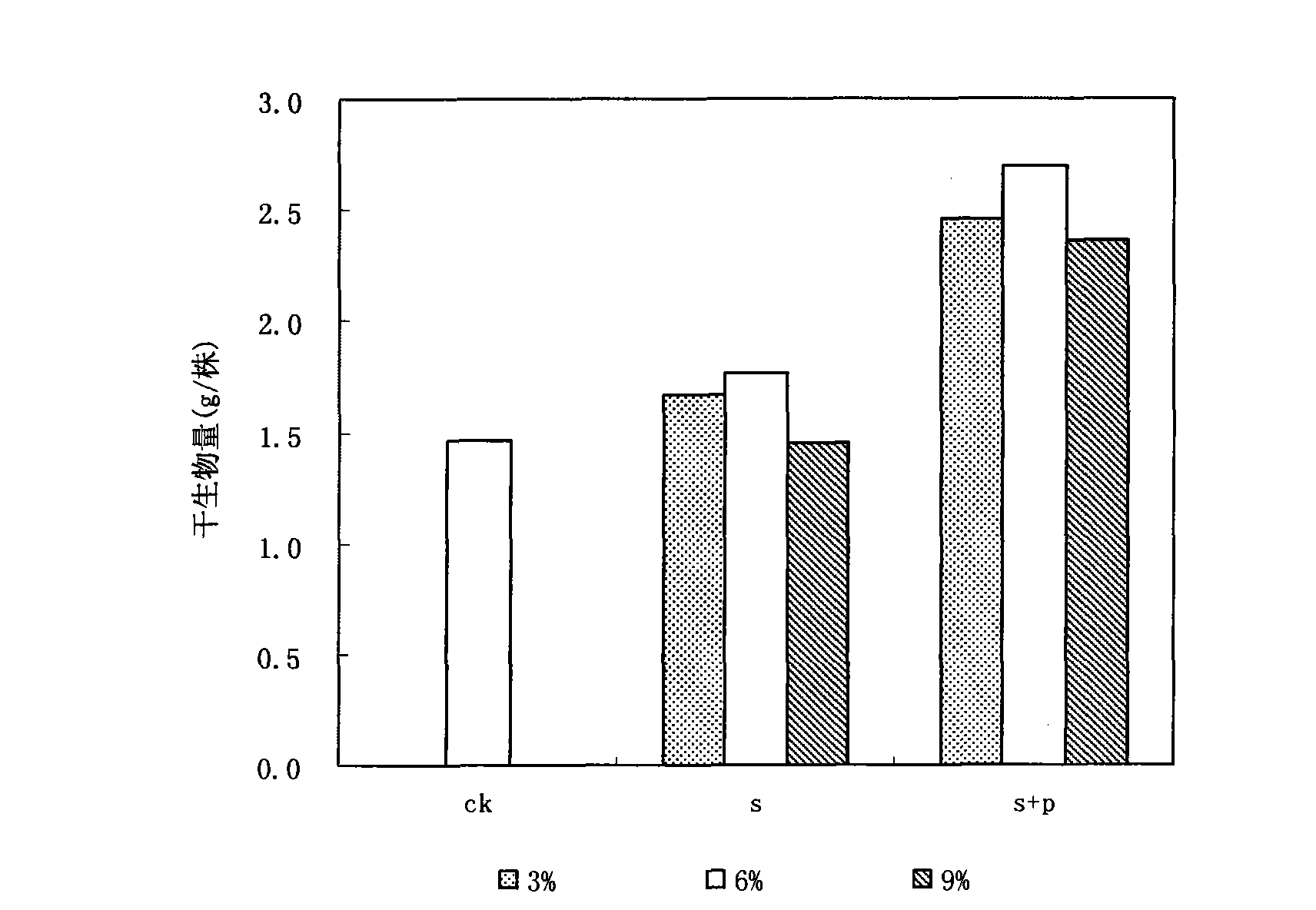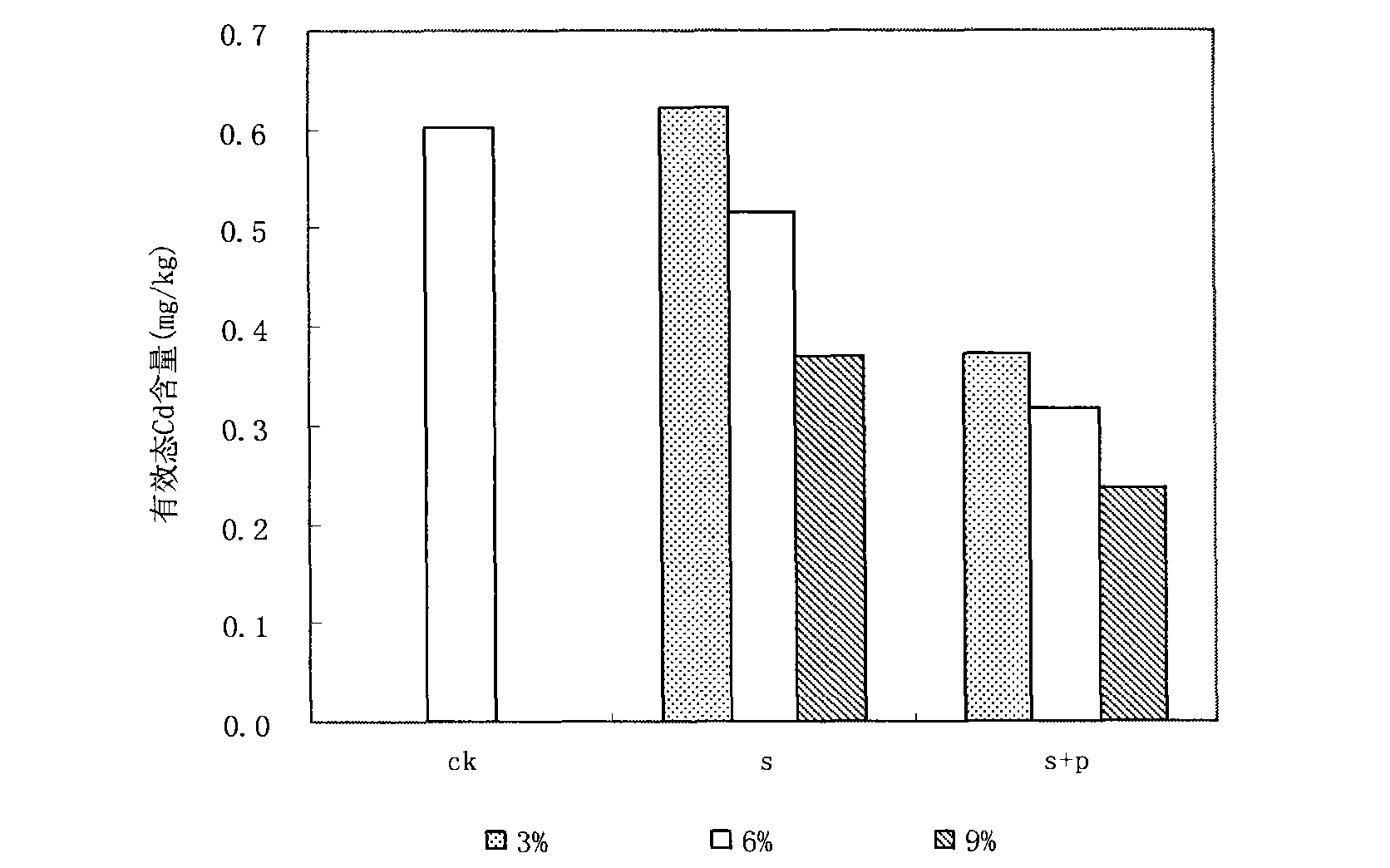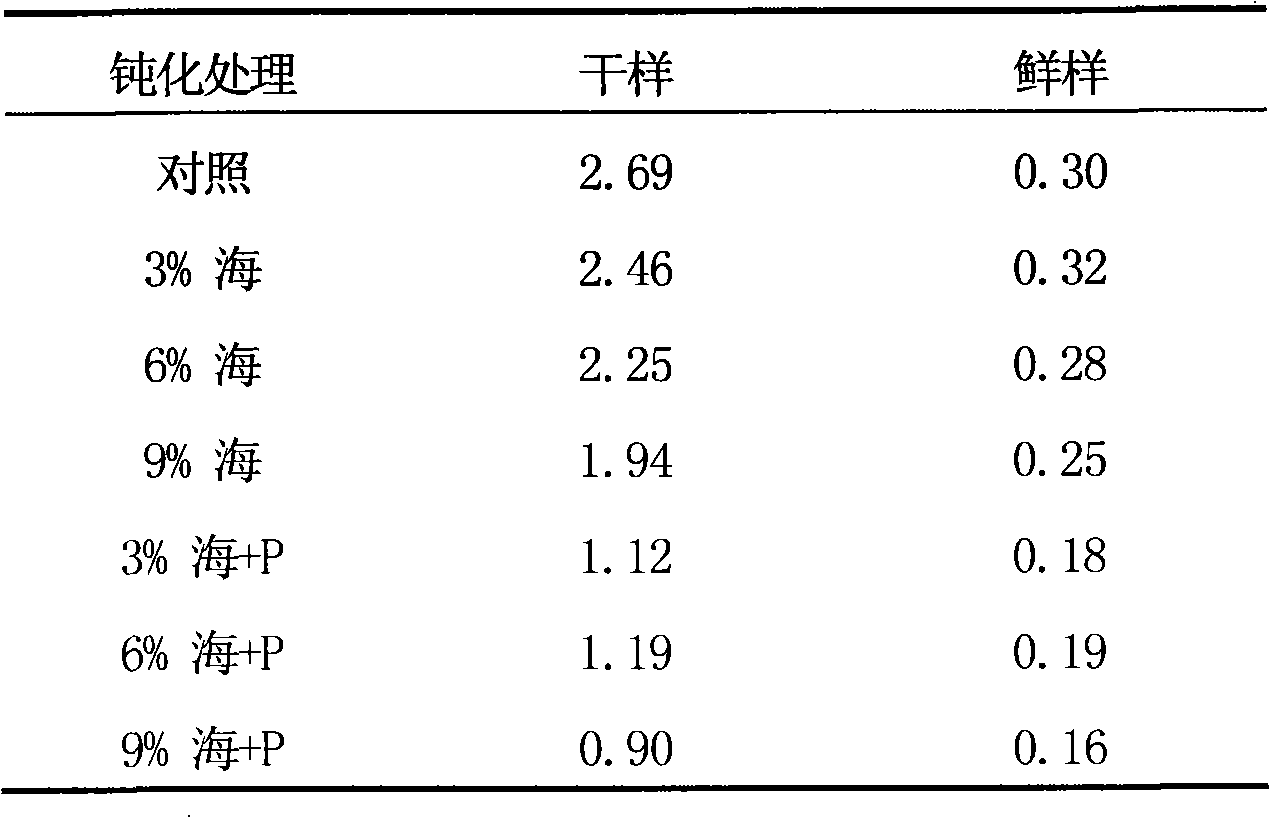Method for restoring heavy metal pollution of vegetable field soil with in-situ passivation method
A heavy metal and vegetable field technology, applied in the field of soil heavy metal pollution control, can solve the problems of limited repair ability of natural clay minerals, difficulty in large-scale promotion and application, and practical impact, so as to reduce bioavailability and transferability, and apply Wide-ranging, low-cost effects
- Summary
- Abstract
- Description
- Claims
- Application Information
AI Technical Summary
Problems solved by technology
Method used
Image
Examples
Embodiment 1
[0018] Example 1: In-situ passivation to repair cadmium contaminated soil
[0019] The test soil was collected from Daye, Hubei, with a pH of 7.20 and a total Cd content of 1.20 mg / kg, which was slightly cadmium polluted soil. The experiment has two types of treatment: sepiolite single treatment (s) and sepiolite and calcium dihydrogen phosphate compound treatment (s+p). In the former, 3%, 6%, and 9% of sepiolite ore powder passed through a 200-mesh sieve are added to the soil by mass; the latter is added with the same amount of sepiolite and 0.25% calcium dihydrogen phosphate at the same time; No passivation material was added as a control treatment (CK). Mix the soil and passivation materials thoroughly, and apply a certain amount of urea and potassium dihydrogen phosphate as base fertilizer, and put them in plastic pots. Each pot contains 2.5 kg of soil, and each treatment is repeated 3 times. Sow rapeseed after one month of aging and irrigate with deionized water daily to k...
Embodiment 2
[0026] Example 2: In-situ passivation repair of cadmium-lead compound contaminated soil
[0027] In order to further investigate the remediation effect of the passivation remediation method of the present invention on the heavy metal composite contaminated soil, a simulated cadmium-lead composite contaminated soil was prepared, and a passivation remediation experiment was performed. The test soil was the same as in Example 1, and Pb-300mg / kg was added to the soil to make a cadmium-lead compound contaminated soil. The experimental treatment is the same as in Example 1. Mix the soil and passivation materials thoroughly, add a certain amount of urea and potassium dihydrogen phosphate as base fertilizer, mix them thoroughly, and put them into plastic pots, each pot containing 2.5 kg of soil, and each treatment is repeated 3 times. Sow rapeseed after one month of aging and irrigate with deionized water daily to keep the soil moisture at about 60% of the field water holding capacity. ...
PUM
 Login to View More
Login to View More Abstract
Description
Claims
Application Information
 Login to View More
Login to View More - R&D
- Intellectual Property
- Life Sciences
- Materials
- Tech Scout
- Unparalleled Data Quality
- Higher Quality Content
- 60% Fewer Hallucinations
Browse by: Latest US Patents, China's latest patents, Technical Efficacy Thesaurus, Application Domain, Technology Topic, Popular Technical Reports.
© 2025 PatSnap. All rights reserved.Legal|Privacy policy|Modern Slavery Act Transparency Statement|Sitemap|About US| Contact US: help@patsnap.com



